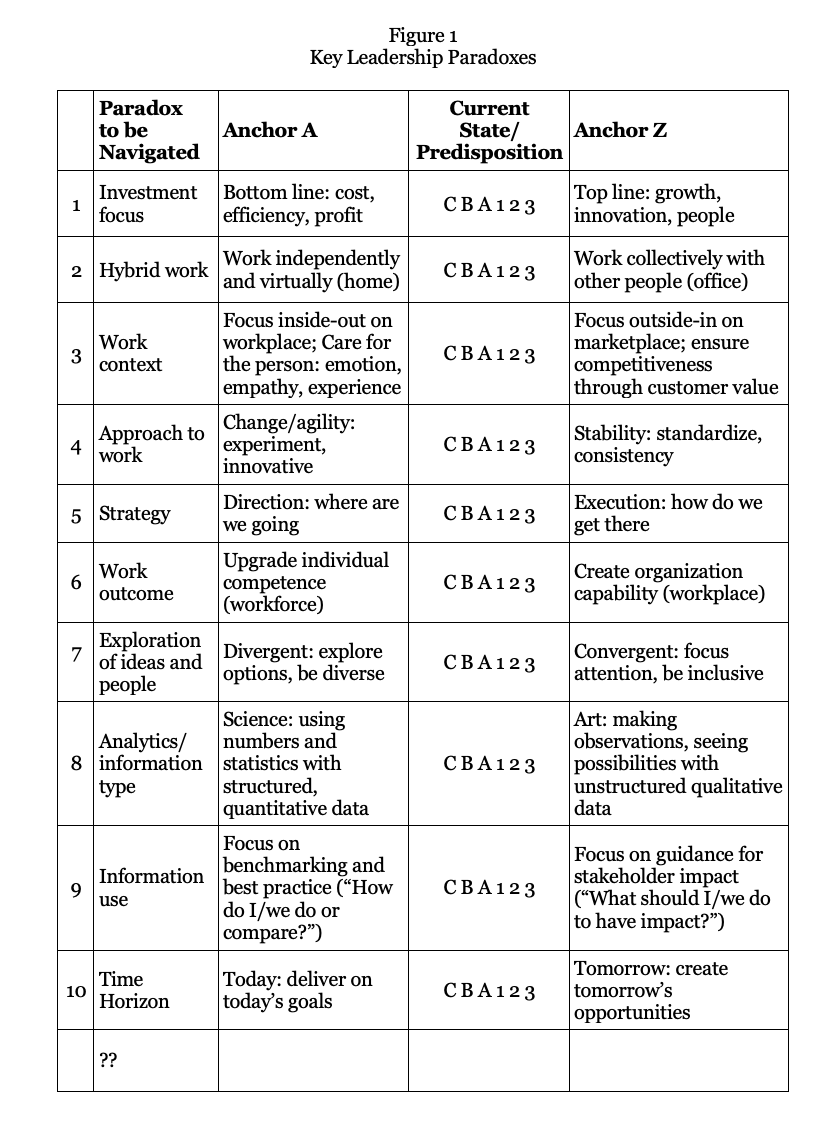5 Ways to Shift Your Leadership Towards Greater Adaptability as Uncertainty Continues
Key Takeaways:
- Redefining success as a processs rather than an expected result allows leaders to keep up with changing needs and expectations.
- Shifting perspective to focus on personal relationships can bridge the virtual gap and help to align with a customer-centric engagement.
- Navigating paradox instead of planning for a predictable end-game allows leaders to remain agile and avoid becoming trapped in unrealistic expectation.

5 Ways to Shift Your Leadership Towards Greater Adaptability as Uncertainty Continues

Imagine someone invites you to “go for a run.” Your clarification questions might include: “Where are we running? How long will we run? How fast will we run? Are we doing a marathon or sprint-type run?” Your friend says, “just run,” and you probably feel a little uncertain about your answer.
Nearly two years ago, when COVID-19 started, some predicted that the COVID-19 crisis would end by Easter, then summer, then the end of the year, then when preventive behaviors (social isolation, masks) prevailed, then with vaccines and boosters readily accessible. Now with Delta, Omicron, and possibly other variants, we have little clarity about the “end game” for the virus and its impact.
Most business and HR leaders relish and rely on clarity: meet these financial (TSR), customer (NPS), and community (ESG) goals; take on this assignment for X months or Y years; enact this policy (e.g. hybrid work) to get these results; and so forth.
But how do you lead when you have little clarity about the future? When you are asked to run without a clear direction, duration, or pace? Or when the COVID-19 virus (and other contextual challenges like social justice, digital revolution, emotional malaise) do not have clear end states?
Leading without clear direction is not without precedent. Yesterday’s pioneers migrated and many of today’s refugees emigrate without a clear destination. Great innovators (Thomas Edison, electricity; Steve Jobs, personal computers; Bill Gates, software; Marie Curie, chemistry breakthroughs; Galileo, the scientific method) may not have envisioned the specific outcomes of their ideas, but they “ran their invention races.” Let me call such individuals progressive leaders because they make progress by harnessing uncertainty, moving ahead without perfection, and having a values-based direction more than a specific destination.
What are some leadership principles that will help today’s business and HR progressive leaders lead even without clarity?
1. Define success as the process more than the result.
Often leaders define success primarily as outcomes (e.g., reaching financial or customer targets). Progressive leaders succeed not only by attending to outcomes (which may be unclear and moving) but by monitoring how well they manage the process to achieve outcomes. They are concerned with what they can control and not what they can’t; focused on values more than objectives, and fold long-term agendas into short-term incremental improvements. They manage by mindset more than objectives, and progress by upgrading processes.
2. Personalize and build relationships.
When the end goal is a moving target, progressive leaders emphasize personalized relationships with those they lead to create a community to support each other and explore options. They express empathy and emotional support to those they lead, create a sense of belonging, and tailor work requirements to the skills of each individual. These personalized engagements enable progress by creating a positive employee experience.
3. Gain perspective.
Perspective means that leaders recognize that not every hour, day, week, or experience will go as planned. Progress does not require perfection, failure is an opportunity to learn, and agility and adaptability are essential to progress. Perspective enables progress by not over or under-reacting. When things don’t work, progressive leaders encourage resilience; when things do work, perspective leaders share credit. They progress by keeping things in perspective.
4. Navigate paradox.
Linear and legacy leaders with clear goals plan their work and work their plan with defined steps to the end game. But when things inevitably change, linear leaders often get stymied. Progressive leaders recognize and navigate the inherent paradoxes in making progress (see figure 1)

Progressive leaders navigate paradoxes rather than trying to manage them when they accept them as part of progress, identify their predispositions, appreciate paradoxes, identify polarities, recognize current states (CBA or 123), understand the other point-of-view, find common ground, and take responsible action. They progress through navigating paradoxes.
5. Ponder by being mindful.
Some leaders try to learn from the past to improve; others anticipate the future to invent. Progressive leaders do both but often live in the present by pondering. They are mindful about what is and is not working, have compassion with both tasks and people, and remain calm and curious in the face of uncertainty. They progress by being patiently aware.
While business and HR leaders may not have clarity about the “new normal,” they can run and not be weary by focusing on process, personalization, perspective, paradox, and pondering.
If you would like help with designing more agile solutions to help your teams navigate ambiguity, please contact us.


